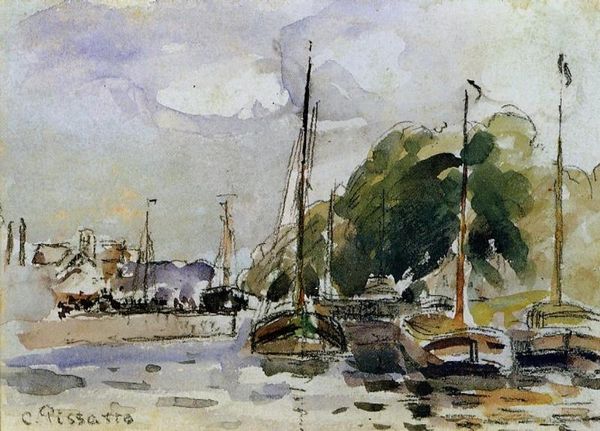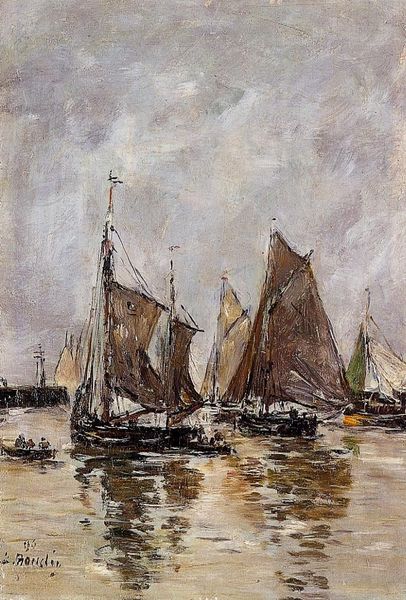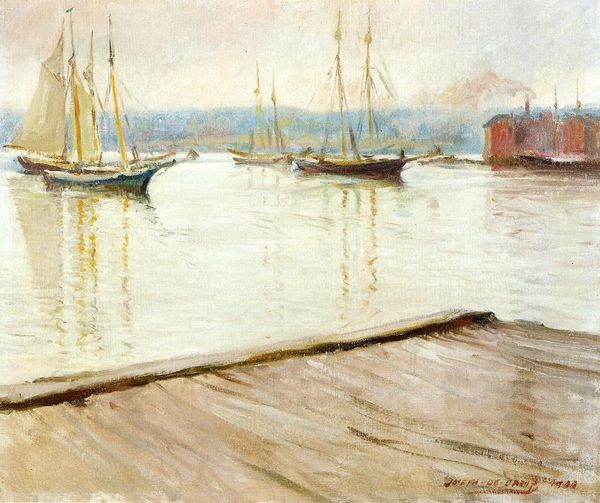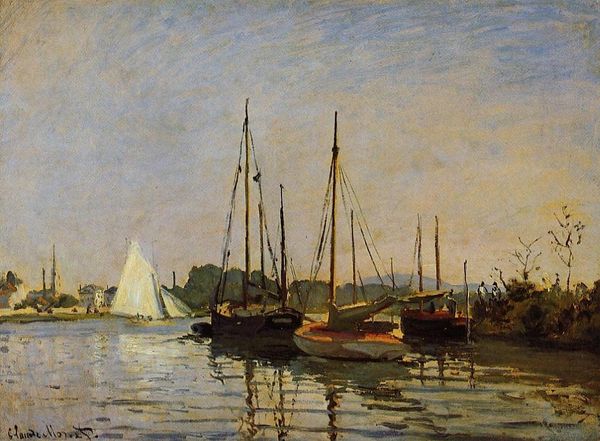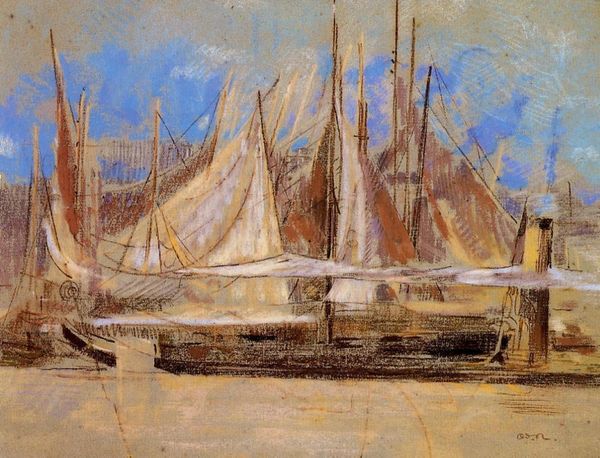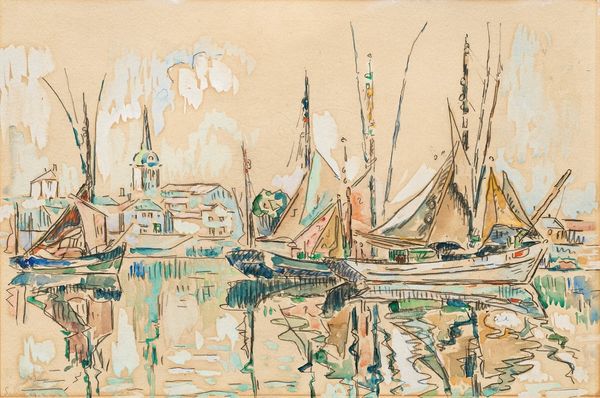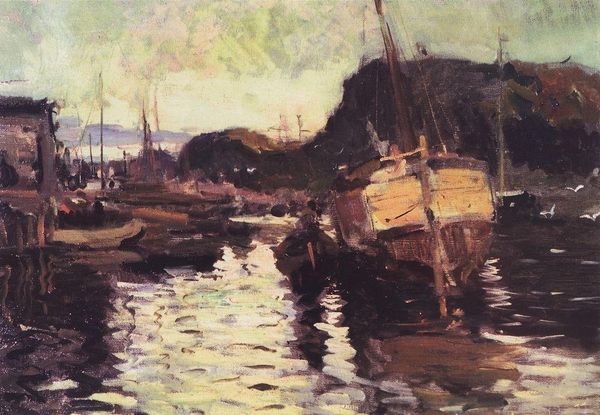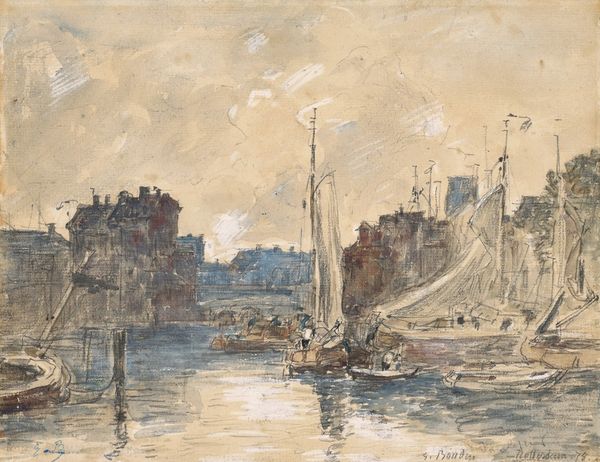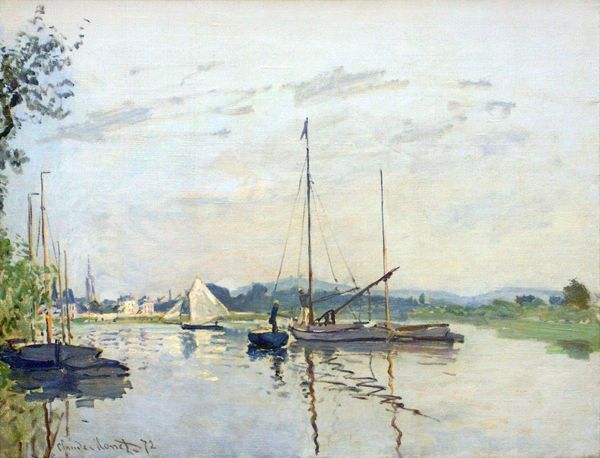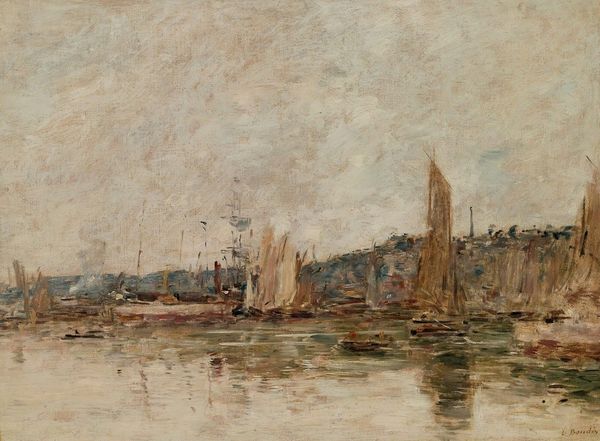
painting, plein-air, watercolor
#
boat
#
painting
#
impressionism
#
plein-air
#
landscape
#
oil painting
#
watercolor
#
water
#
cityscape
#
watercolor
Dimensions: 17.5 x 19 cm
Copyright: Public domain
Editor: Here we have Berthe Morisot's "Boats - Entry to the Medina in the Isle of Wight," painted in 1875, and crafted with watercolors and oil. It has this delicate, almost ephemeral quality to it. What can you tell me about it? Curator: What strikes me is the depiction of the boats themselves. These weren't luxury yachts; they were working vessels. Morisot's quick, almost casual, application of watercolor acknowledges the means of their production and use: functional objects built for labor. Editor: I see what you mean. So you are saying her style connects with a perspective of labour? Curator: Precisely. Consider how she employs watercolor. A medium often associated with amateur artists and "feminine" pursuits was chosen. Yet here, it documents the very real economic activities around the Medina harbor. What does that choice say about her perception of work and gender in art? Editor: It challenges a distinction, then, between high art and something more grounded in daily life. Curator: Exactly. It questions who gets to represent labour and how. It invites us to consider not just what is depicted, but also the materials and processes behind its creation and the socioeconomic factors at play within the artist's practice. What assumptions do we bring to the idea of labor in art versus craft? Editor: I never thought of watercolor as making a social statement before! Thanks, this really changed how I'll look at Impressionism. Curator: Likewise. Looking at the materials as both method and statement opens a rich new perspective on this artwork.
Comments
No comments
Be the first to comment and join the conversation on the ultimate creative platform.


